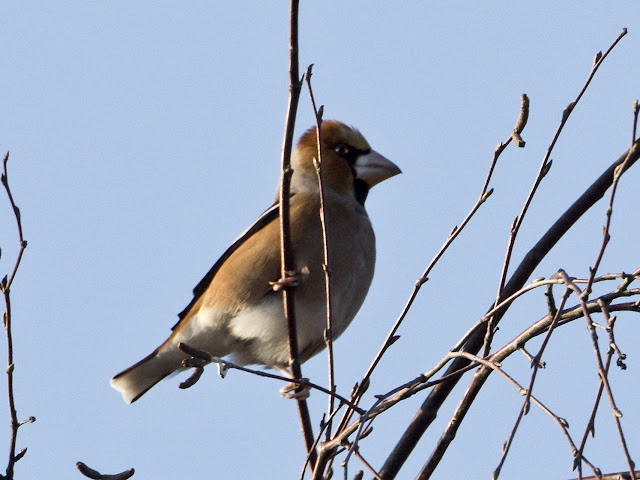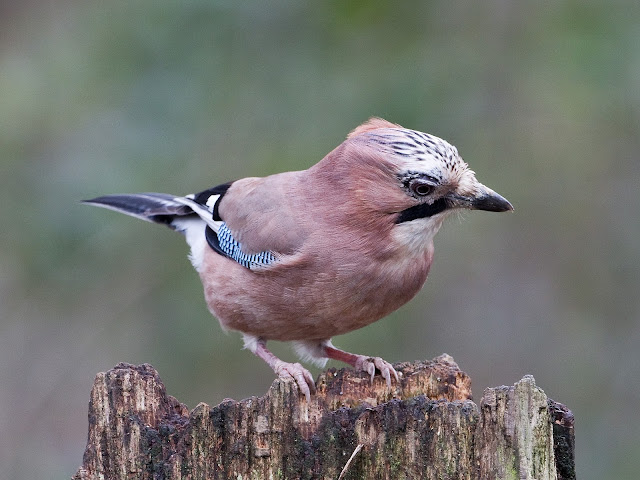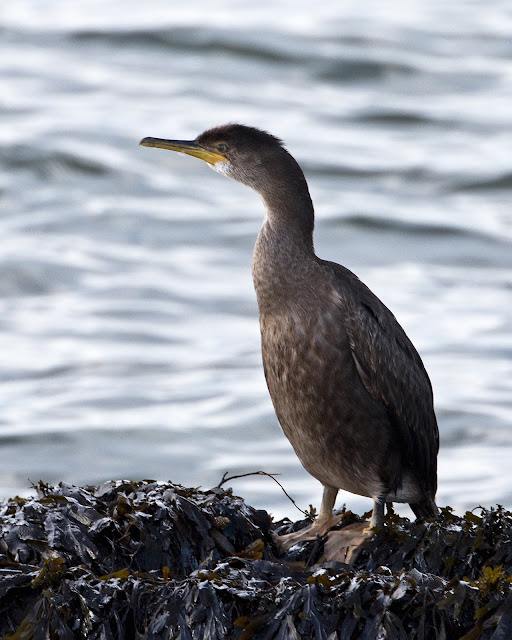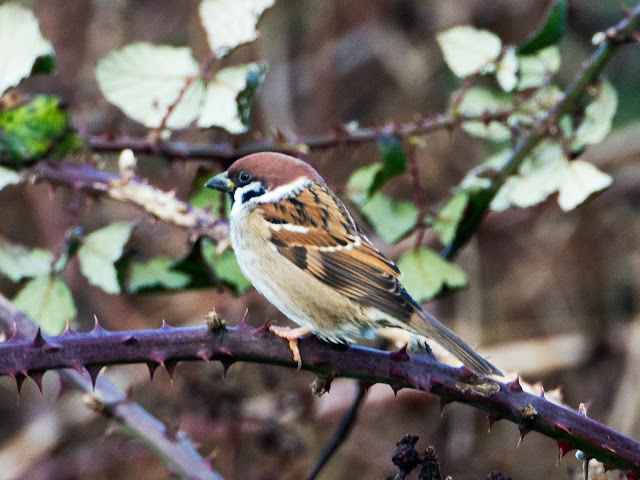I have been out gathering year ticks over the past week. That is, see the bird and move on, rather than stand and wait for the right picture opportunity. However, I have still ended up with a few pictures that are worth putting on the blog.
One of the key birds I was looking for was a Little Gull. I was standing in the right place, just by Southsea pier, a juvenile Little Gull had been seen a few minutes earlier, and this bird was sitting just off the beach. The risk is that we see what we are looking for and not what is actually there. It looked good, but then, the bill was the wrong shape, the dark collar on the back of the neck looked wrong, and it should have had black cap of some form. It's actually a juvenile Kittiwake but it had me fooled for a while and I had to spend some time delving through books on gull identification once I got home to be sure.
Therein lies the real benefit of bird photography. You get a second chance to check the identification. Without that I could easily have made a mistake.
 |
| Juvenile Kittiwake |
 |
| Juvenile Kittiwake |
Fortunately we caught up with a Juvenile Little Gull a couple of days later on Climping Beach. It was too far away for a picture but at least that time I had a lot clearer idea of what I was looking for.
It's hard work but I think I could actually get to like juvenile gull identification.
Other gulls spotted whilst we were out were Common and Mediterranean. The first at Arundel Wetland Centre and the second on Climping Beach. However, with Waldo failing to return to Gosport, there is no easy Ring-billed Gull this year.
 |
| Common Gull |
 |
| Mediterranean Gull |
The Wetland Centre also gave us ticks for Goldcrest and Firecrest. As you might expect there were a couple of decent Goldcrest shots but all the Firecrest pictures were blurred.
 |
| Goldcrest |
Farlington Marsh gave us distant views of Bearded Tits but there was no chance of a picture. Fortunately the ever present Stonechat popped up to have his picture taken.
 |
| Stonechat |
And, finally a trip to Church Norton didn't give us the views of a Spoonbill that we were looking for but we did get to see an overwintering Whimbrel that was hunkering down out of the wind.
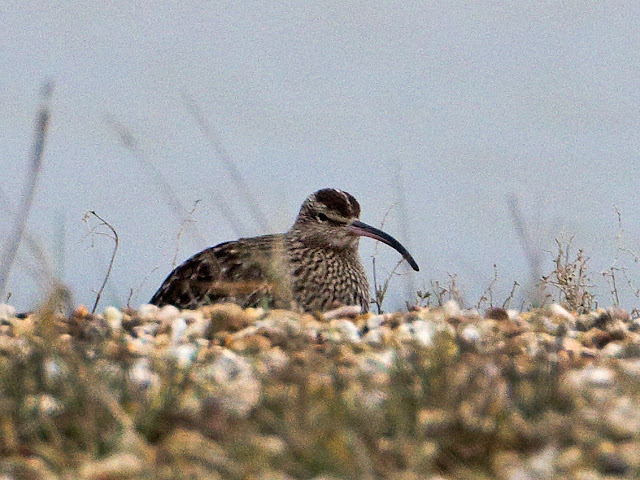 |
| Whimbrel |
It has not been a bad start to the year but there are still a few of the winter birds that I would like to find before they head off to their summer grounds.
